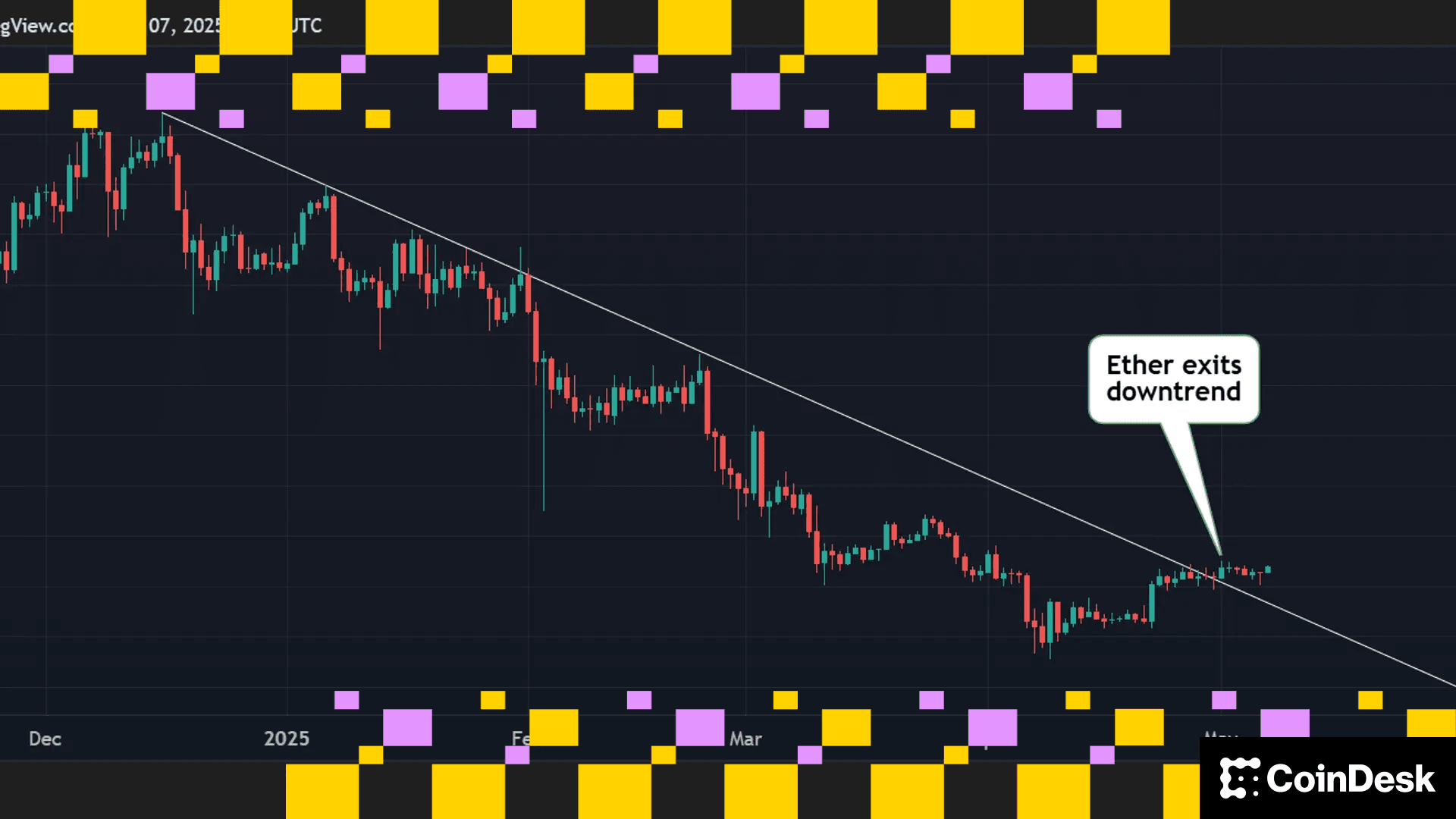Bitcoin Hashrate May Finally Slow as Miners Face Scorching Summer Heatwaves
Hashrate for the Bitcoin network typically flattens or declines during North American summer time, industry experts say.

- Bitcoin hashrate and difficulty may fall during the North American summer months as miners curtail some of their operations.
- Lower competition may provide some reprieve to miners who are already facing a profit squeeze due to the halving event, which reduced Bitcoin mining rewards by 50%.
The unrelenting growth of Bitcoin's {{BTC}} hashrate, or computing power of the network, may finally slow down, giving miners some reprieve as extreme summer heatwaves force curtailments of some operations.
Miners have seen their profit margins squeezed in an already overcrowded sector after the halving cut their mining rewards by 50% while hashrate kept hitting new all-time highs. Among the main reasons for growing hashrate: previously purchased mining rigs are coming online, and the miners have been scrambling to upgrade their fleet with more efficient rigs to stay profitable after the halving. On May 25, for example, hashrate climbed to a record high of 658 exahash per second (EH/s), according to Luxor's Hashrate Index data.

However, this unrelenting growth is poised to slow down for the next few months as North America enters the summer with is associated heat waves. Miners use extremely powerful machines that give off a lot of heat as a result of their computations. "The number one operational challenge for Bitcoin miners is heat mitigation," said Blockware Intelligence analysts. "ASICs are large, powerful computers that can reach very high temperatures without proper cooling measures in place."
Mitigating this heat becomes an even greater issue during summertime as the companies need more power to cool their machines and/or shut down operations due to high demand from energy consumers cranking their air conditioning. "Many miners have to curtail operations [during summer months] in part due to overheating, but also due to residential energy consumption reaching high enough levels to activate demand response clauses in miners’ power purchase agreements," Blockware added.
This seasonal phenomenon has resulted in lower hashrate over the past two summers and the lower hashrate means a decline in the difficulty of mining a bitcoin block. "As we enter the summer months in the United States, we're keen to see if hot weather will force miners to curtail and thus suppress hashrate growth as we saw in 2022 and 2023," according to a June 17 report by Colin Harper, head of content and research at Luxor Hashrate Index.
In fact, the hashrate has already started to come down since reaching an all-time high in March. As of June 17, it is lower by 10% to 589 EH/s, according to Hashrate Index data. Since most miners are located in the U.S., particularly in steamy Texas, companies in North America shutting down their operations will likely make a dent in the hashrate growth. "According to data from the University of Cambridge, roughly 37% of all Bitcoin mining takes place in the United States," said Blockware. "As summer continues heating up, it’s reasonable to expect US-based miners to have heat-induced curtailments."
The lower hashrate and difficulty could be a positive outcome for some miners as competition ramps down for the summer. Additionally, some miners, such as Riot Platforms (RIOT), will be able to earn extra income from the power grid by curtailing their operations as part of their power purchase contracts.
Luxor's Harper: "If hashrate continues to stoop, then miners may be graced with a negative [difficulty] adjustment this week – here's to hoping!"
Read more: Bitcoin Miners With Attractive Power Contracts Are Potential M&A Targets, JPMorgan Says
Higit pang Para sa Iyo
Exchange Review - March 2025

CoinDesk Data's monthly Exchange Review captures the key developments within the cryptocurrency exchange market. The report includes analyses that relate to exchange volumes, crypto derivatives trading, market segmentation by fees, fiat trading, and more.
Ano ang dapat malaman:
Trading activity softened in March as market uncertainty grew amid escalating tariff tensions between the U.S. and global trading partners. Centralized exchanges recorded their lowest combined trading volume since October, declining 6.24% to $6.79tn. This marked the third consecutive monthly decline across both market segments, with spot trading volume falling 14.1% to $1.98tn and derivatives trading slipping 2.56% to $4.81tn.
- Trading Volumes Decline for Third Consecutive Month: Combined spot and derivatives trading volume on centralized exchanges fell by 6.24% to $6.79tn in March 2025, reaching the lowest level since October. Both spot and derivatives markets recorded their third consecutive monthly decline, falling 14.1% and 2.56% to $1.98tn and $4.81tn respectively.
- Institutional Crypto Trading Volume on CME Falls 23.5%: In March, total derivatives trading volume on the CME exchange fell by 23.5% to $175bn, the lowest monthly volume since October 2024. CME's market share among derivatives exchanges dropped from 4.63% to 3.64%, suggesting declining institutional interest amid current macroeconomic conditions.
- Bybit Spot Market Share Slides in March: Spot trading volume on Bybit fell by 52.1% to $81.1bn in March, coinciding with decreased trading activity following the hack of the exchange's cold wallets in February. Bybit's spot market share dropped from 7.35% to 4.10%, its lowest since July 2023.
More For You












